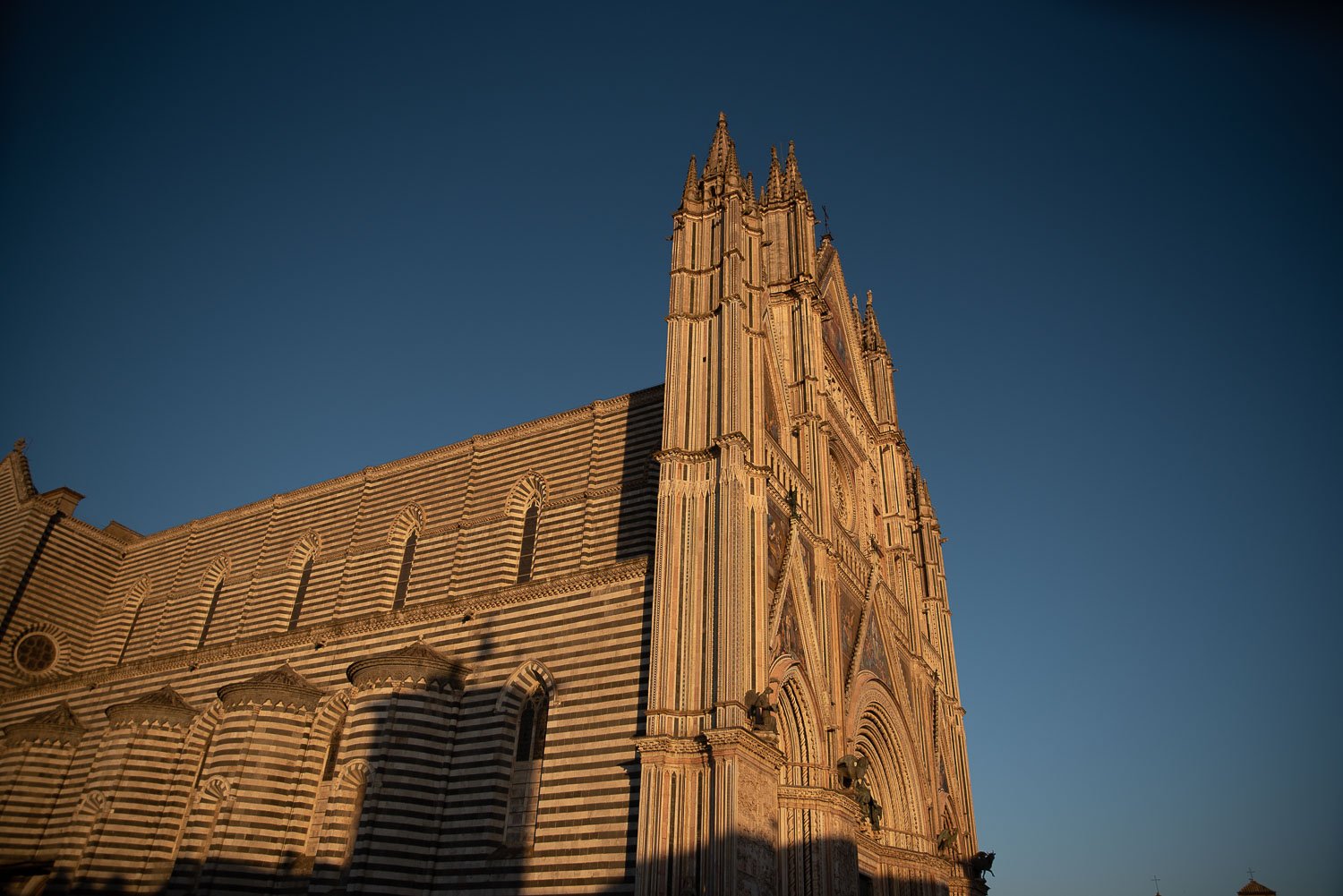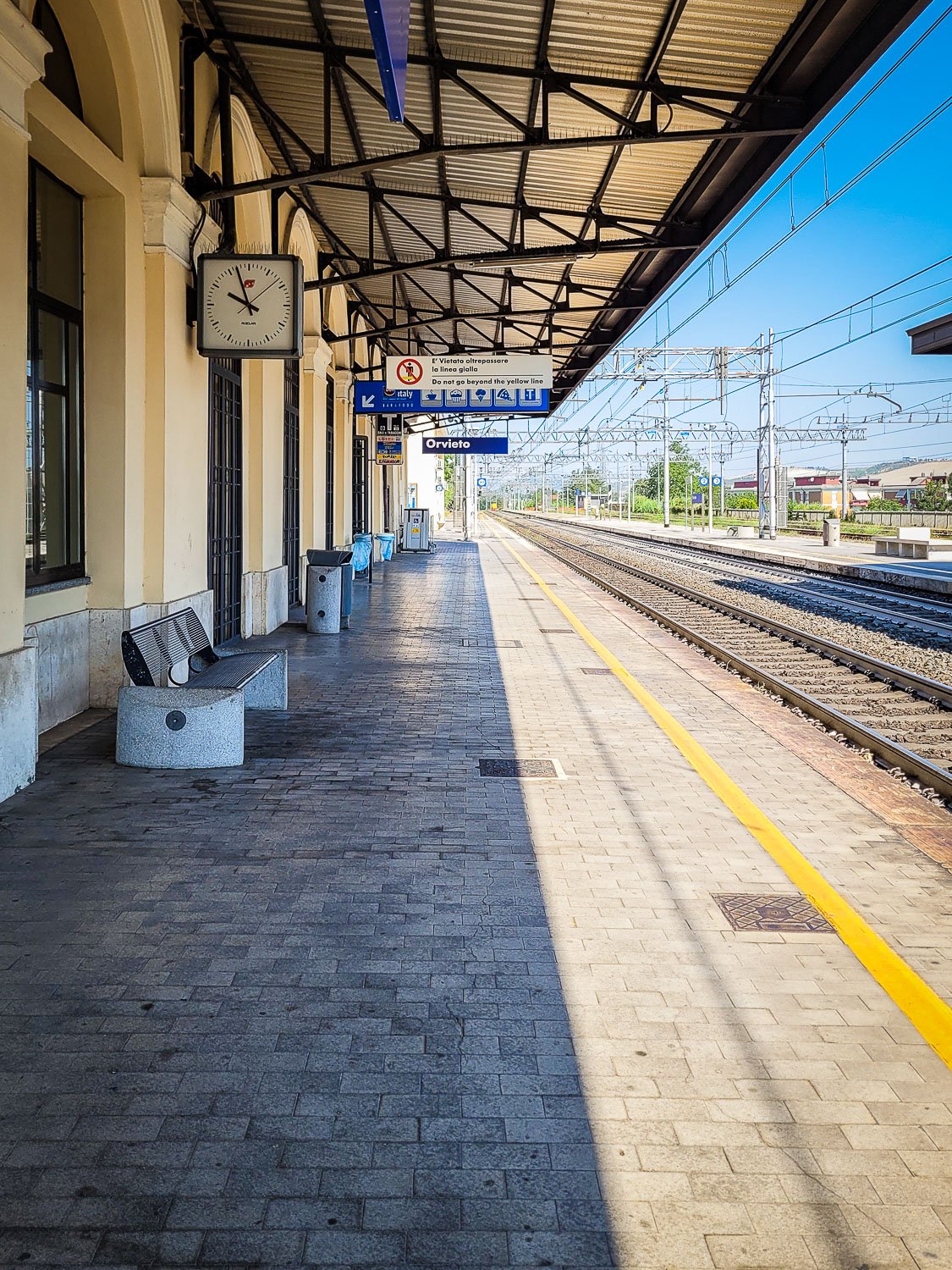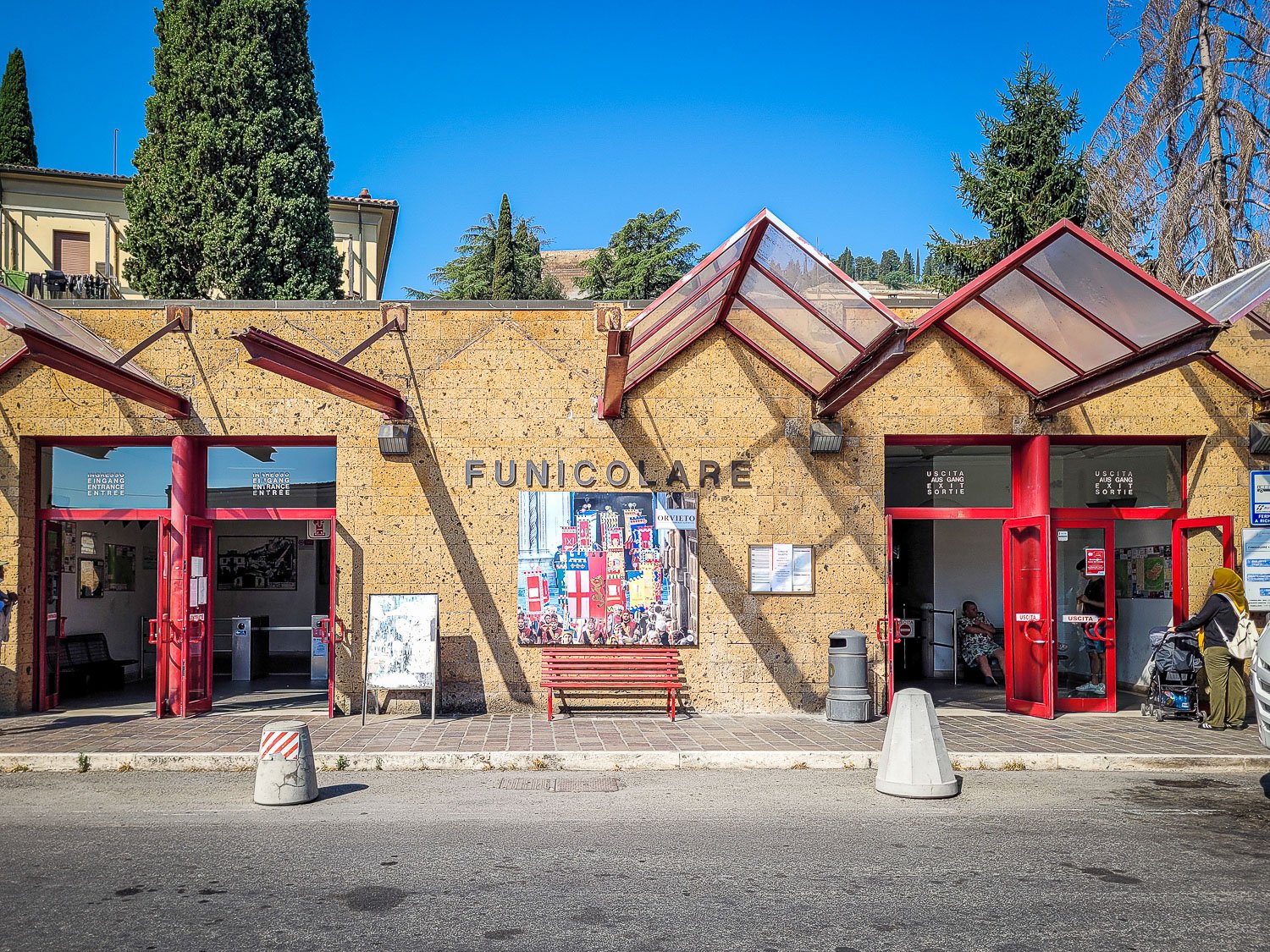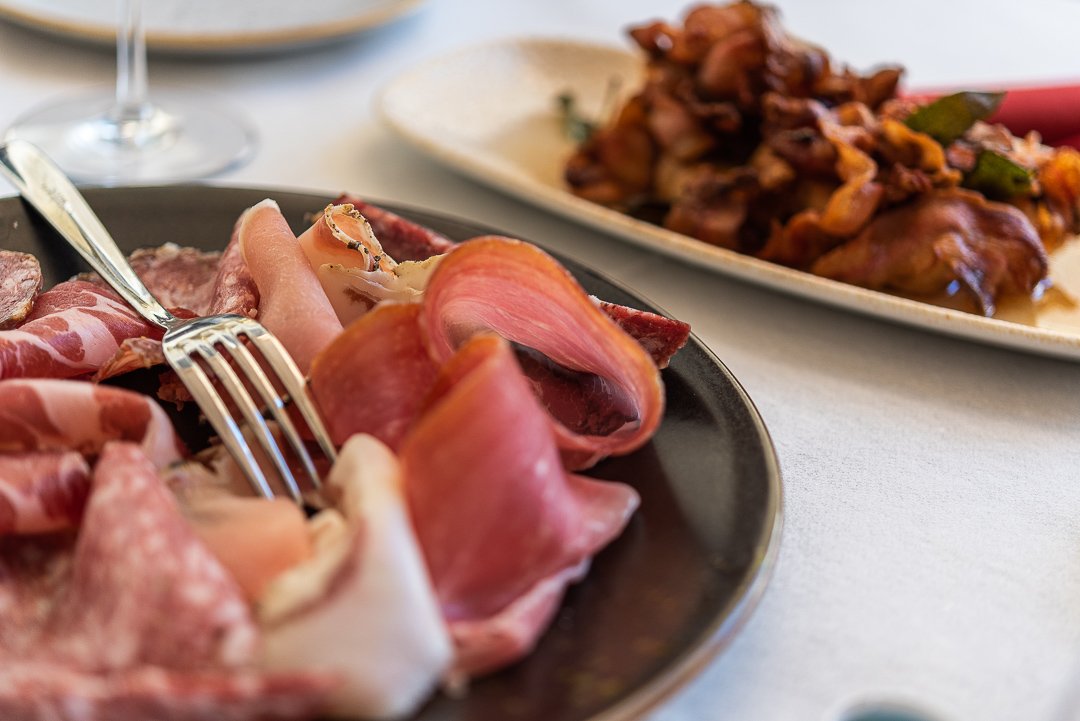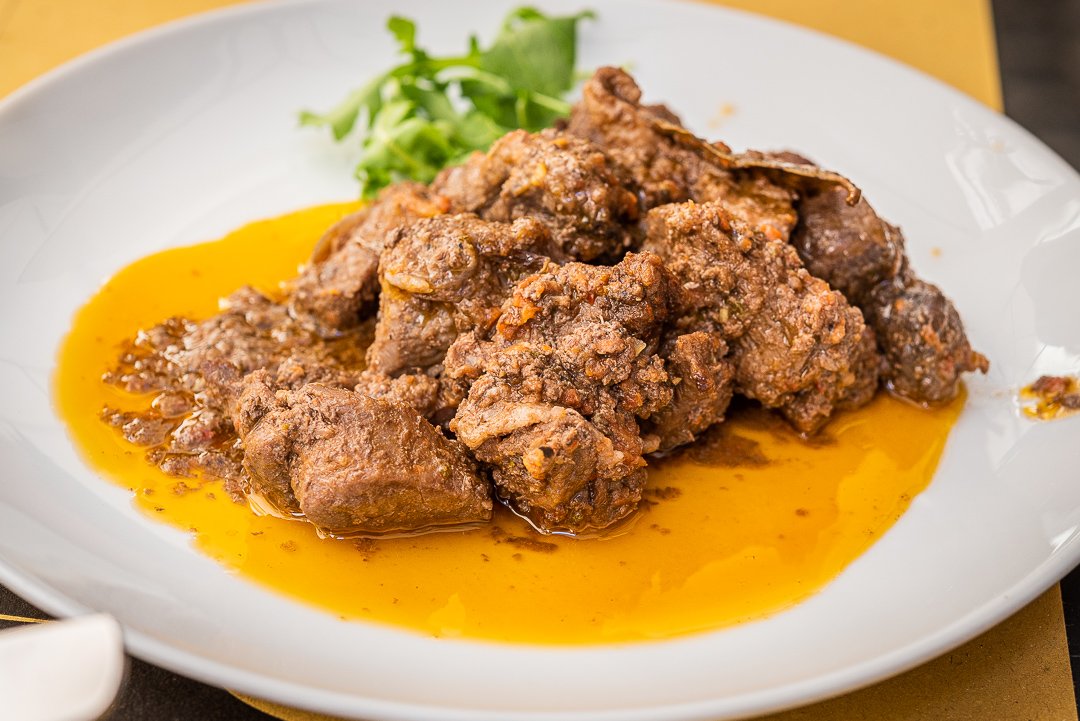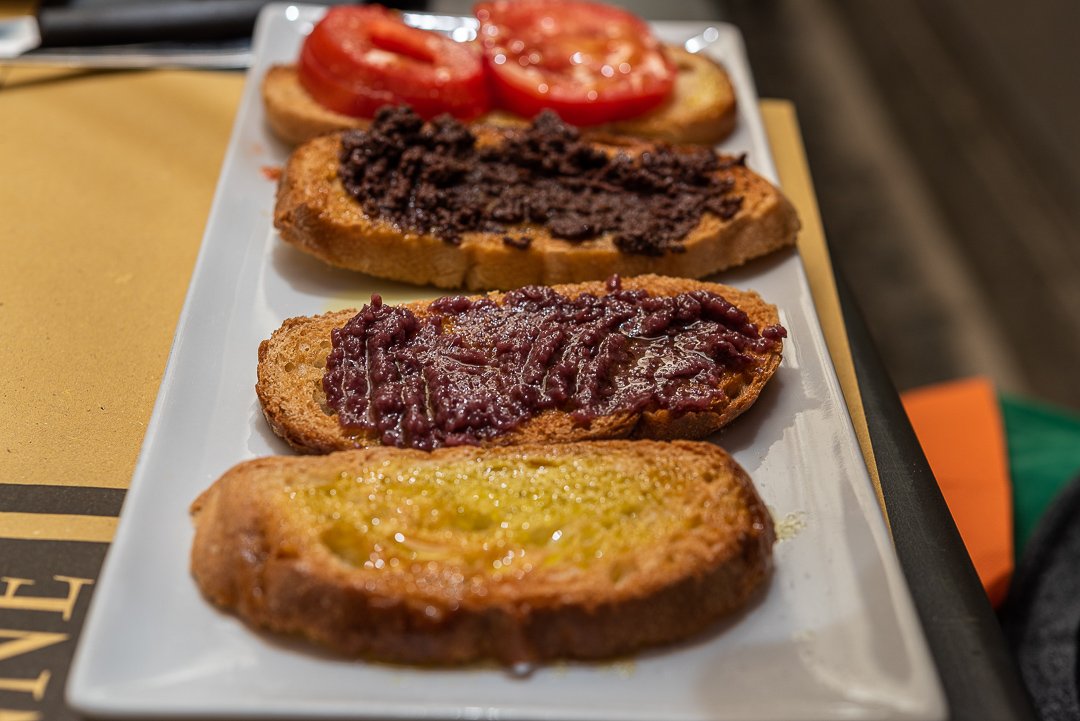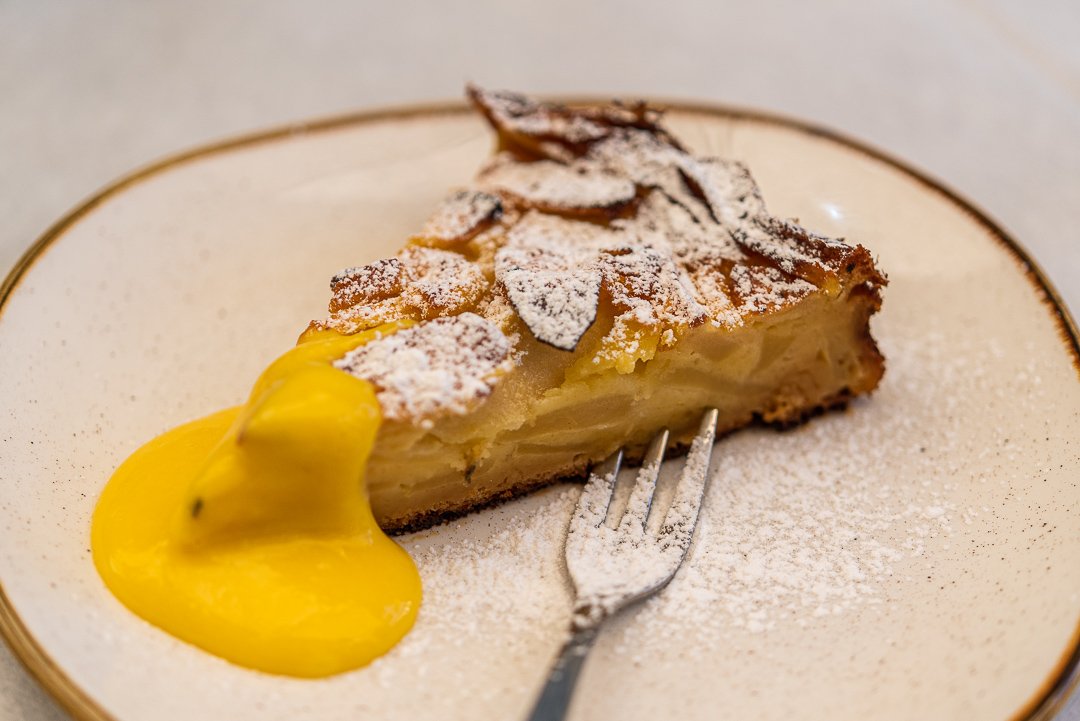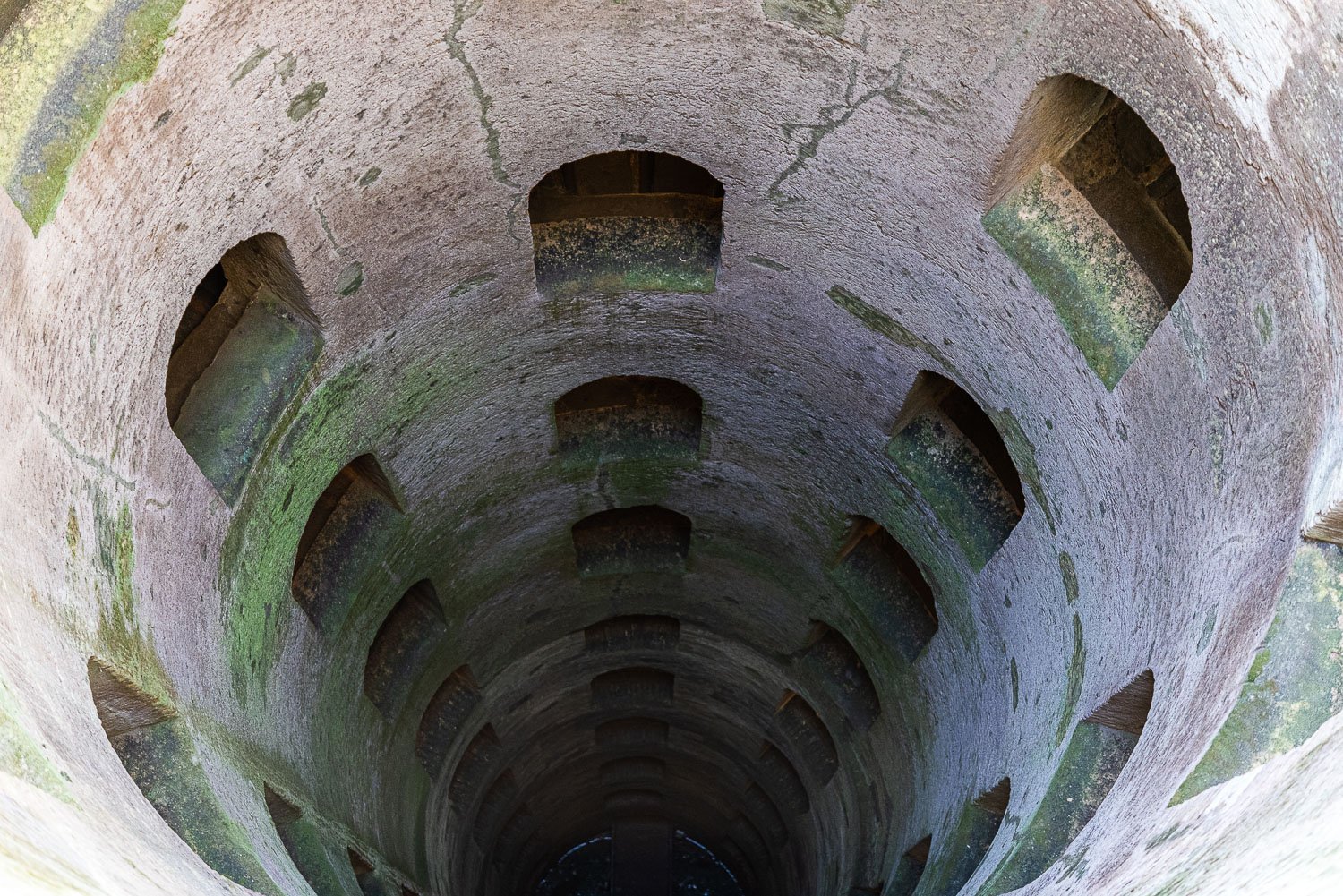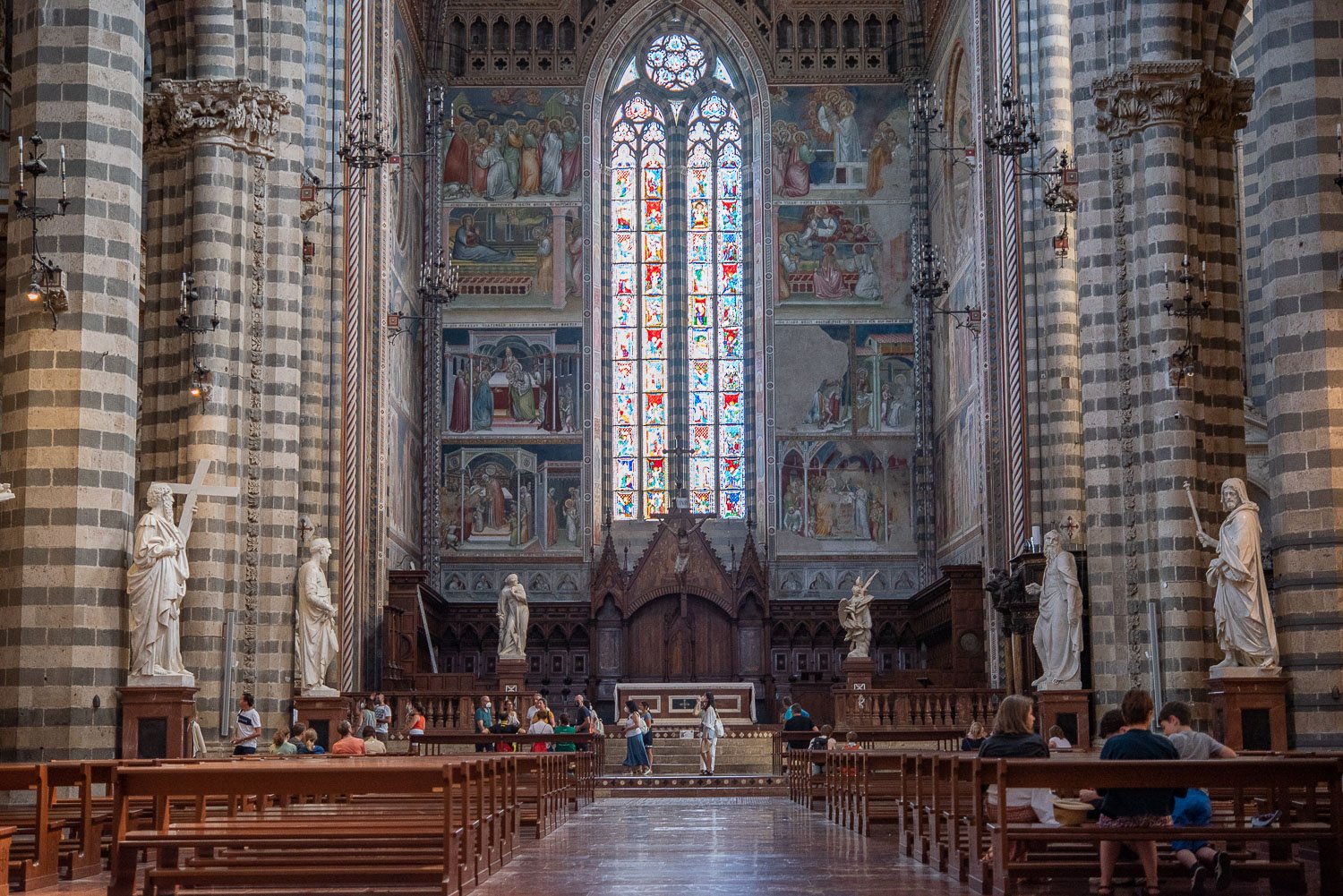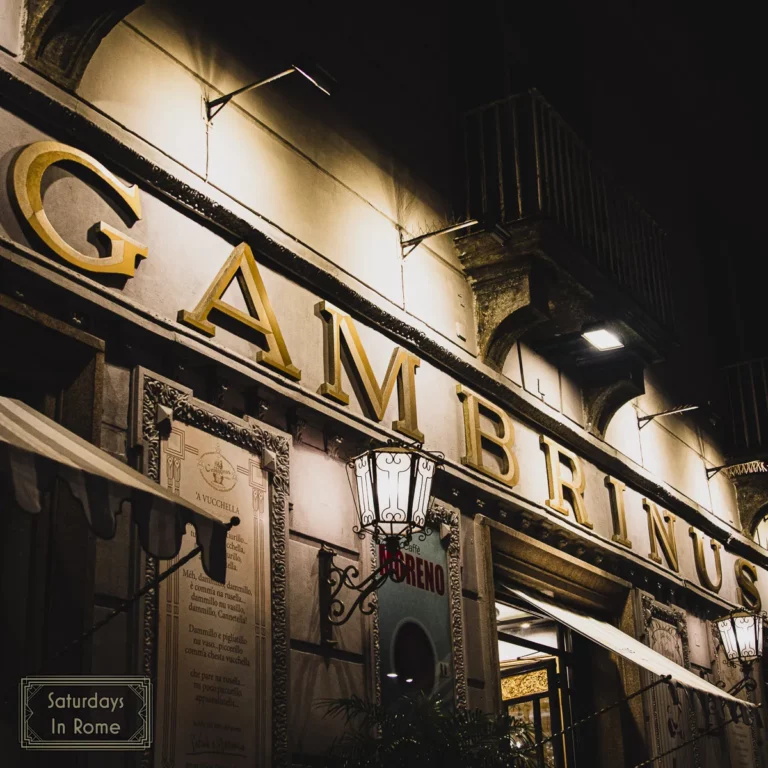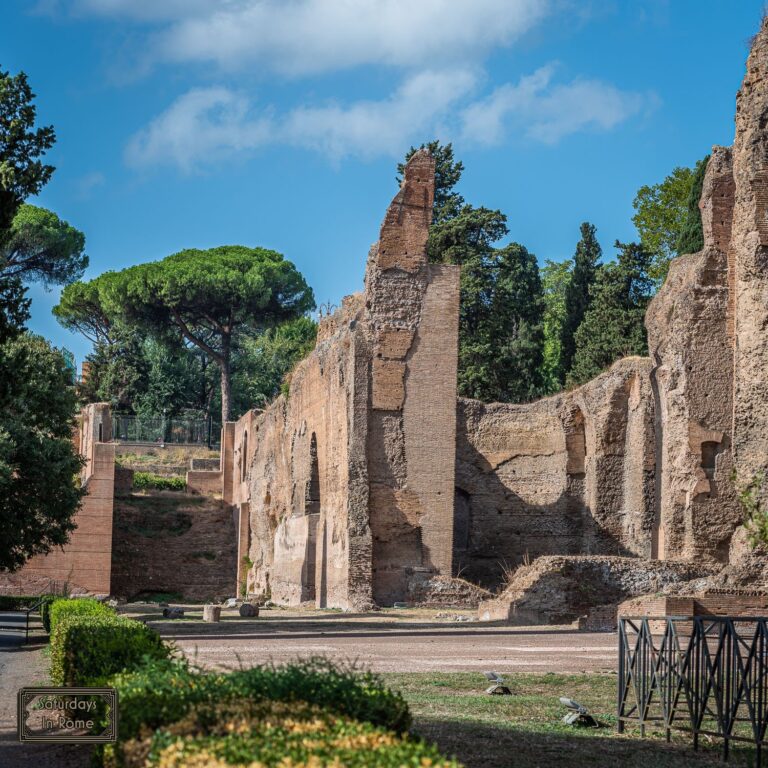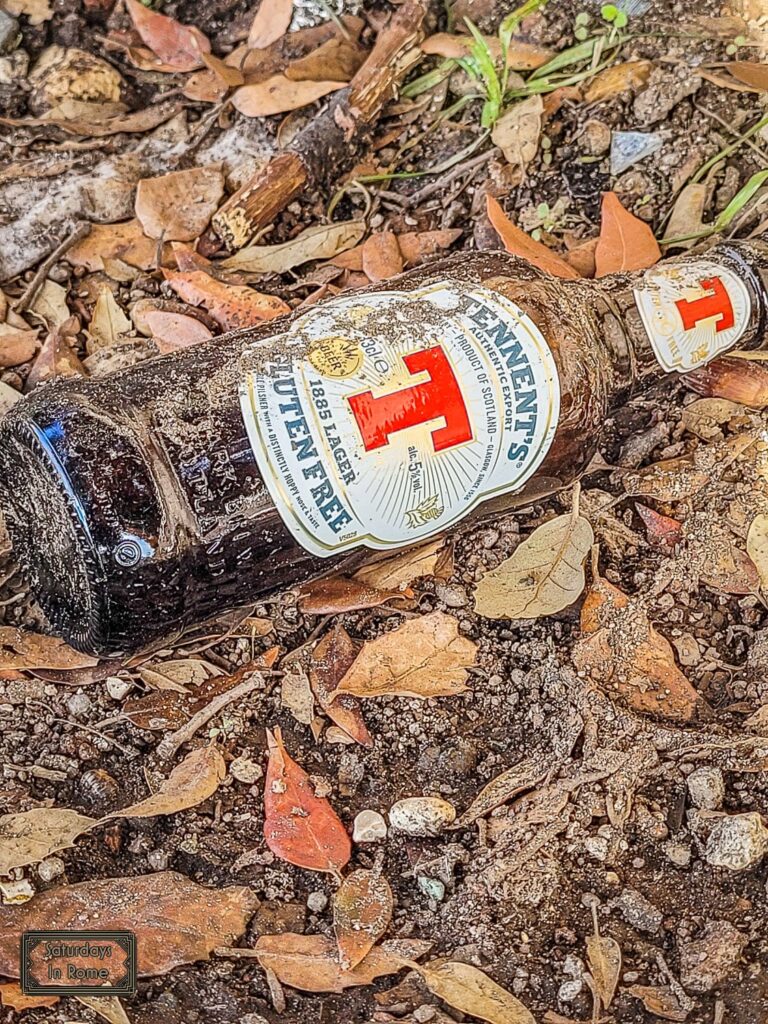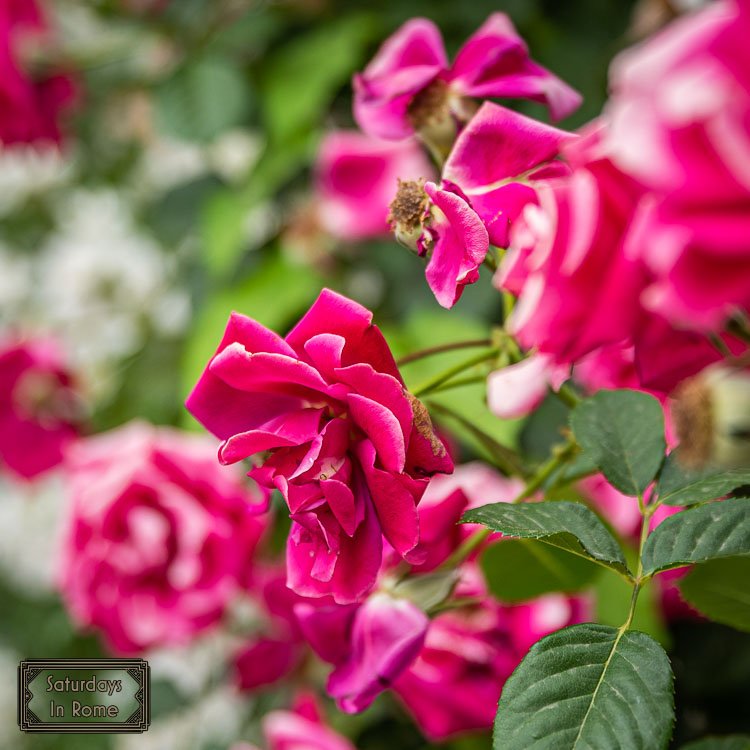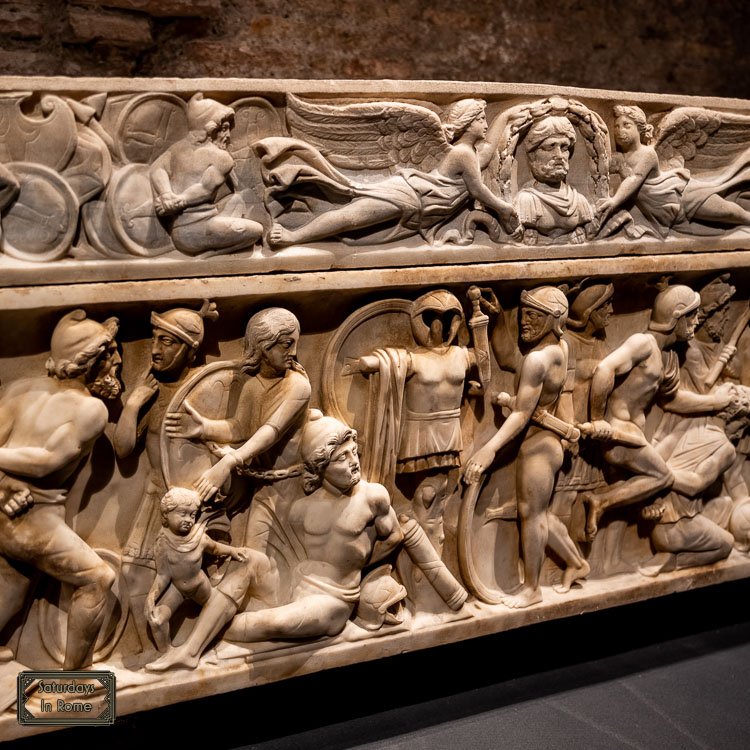A Rome To Orvieto Day Trip Is A Fantastic Opportunity
A Rome to Orvieto day trip is easy by train and close enough that you can enjoy the beauty and food of this Umbrian hilltop town in one or two relaxed days.
The Duomo In Orvieto
Orvieto is a beautiful hilltop town in Umbria that has a rich Etruscan and Medieval history. If you are looking for an easy day-trip from Rome, you couldn’t pick a more enticing destination that is very convenient by train and small enough to be able to experience in a single day, but with enough sites and history to make it well worth the trip. We visited Orvieto for a couple of days at a very relaxed pace and we wanted to share a couple of special places that we enjoyed.
Need Help Planning?
- Cheap Flights: Find The Most Affordable Flights.
- Accommodations: From 1 to 5 Stars And More.
- Car Rentals: Affordable Travel Across Italy.
- Sightseeing Tours: Explore Some Amazing Tours.
- Buying An eSIM: Stay Connected In Italy.
This post includes affiliate links.
Orvieto is in the province of Terni in southwestern Umbria. It is situated on the flat summit of a large butte of volcanic stone called tufa. The city has been populated since Etruscan times and was a major center of Etruscan civilization. There is an archaeological museum which houses some of the Etruscan artifacts that have been recovered in the area.
A Rome To Orvieto Day Trip By Train
The Train Station in Orvieto
You can drive to Orvieto from Rome by heading north on the E35 and continuing on the A1 until you reach the city. There is parking by the train station, and then you will need to take the funicular up the cliffs to the historic center. This ancient city is more accessible by foot due to the very tight streets and pedestrian traffic.
We chose to take the train from Rome, which was very quick and easy. We departed from Termini Station and the Intercity train ranges from around €11 to €18, depending on the time. The journey will last between 1 and 1.5 hours. One thing to keep in mind is finding the right track. You need to give yourself enough time to reach your train because the tracks used by this train are labeled 2EST, which is a pretty good distance from the entrance to the tracks (binari).
Once you reach Orvieto and you exit the train station, you will see directly across the street the entrance for the funicular. If you are unfamiliar with a funicular, please allow me to explain.
The Orvieto Funicular
The Funicular Station in Orvieto
A funicular (funicolare) is a type of cable railway system that connects points along a railway track used to climb a steep slope. It has two cars (or trains) attached to opposite ends of a cable. When in use, the two carriages move at the same time as one ascends, the other descends at an equal speed. For most of the journey there is a single track that both cars run on, but in the middle, where they could collide, there is a short split in the track allowing them to easily pass by each other. We’ve had the pleasure of riding these in both Orvieto and Naples and the views are amazing when you aren’t in the section of tracks that are in a tunnel.
As I mentioned above, when you exit the train station you will see a small building with the sign indicating it is a funicular directly across the street. This will bring you to one edge of Orvieto and from there you can either walk into the city center, which is around 800 meters, or you can use the bus with the same ticket from the funicular, which has a stop right outside the funicular stop.
What And Where To Eat In Orvieto
Sliced Meats and Fried Pork-Belly
Although Umbria can be overshadowed by Tuscany when it comes to food, a growing number of people are learning about the amazing cuisine of this region. During a recent episode of Stanley Tucci’s show Searching for Italy, he visited the region and included a variety of chefs, cooks and butchers that brought to life the food and heritage of Umbria in a way that made the trip there a necessity.
We visited Orvieto for a couple of days at a very relaxed pace. We reached out to some friends who live in town and asked for some recommendations on where to eat that I will share with you below. This is admittedly a short list, but you can be certain that there are many other restaurants to try when you wind around the narrow streets and peek into the small osterias. My intention here is only to point out some of the best places to start enjoying the food and to draw attention to a couple of the foods for which Umbria is best known.
An Orvieto Specialty – Wild Boar (Cinghiale)
Wild Boar alla Cacciatora
In the last year I have heard reports of wild boar (cinghiale) invading the Roman streets and how this is a serious problem because they are showing up outside of schools in the northern part of the city. The responsibility for fixing this issue aside, I can’t help but wonder if there isn’t a simple solution right under our noses, literally. Cinghiale in Umbria have been used for some of the most delicious sauces, dried meats and main dishes I have ever had. I understand that the pigs that are invading Rome might be a different species and possibly not as tasty, but maybe we should check that out to be certain.
All jokes aside, the opportunity to enjoy Cinghiale in Orvieto was something I was excited about and it was the plan for our first meal in town. I have had cinghiale ragù here in Rome, but it wasn’t a memorable meal. I think I’ll leave it to the Umbrians from now on. We enjoyed it two ways that I’ve detailed below, in a ragù and stewed in the cacciatore style.
Umbricelli In Orvieto
When traveling around Italy, it is important to us to try the various regional specialties so I was excited to learn from our server that Umbricelli is one of those specialties. It is a typical Umbrian handmade fresh pasta. It is easy and cheap to prepare with its only ingredients being flour, water and salt. It sounds simple, but when it is paired with the right sauce, in our case a cinghiali ragù, it is a perfect blend of chewy pasta that binds nicely to the sauce.
Truffles
Another specialty of Umbria that was new to me are truffles. I enjoy mushrooms, but I’m “forced” to enjoy them only when I go out because the rest of my house is not a fan. That said, when I go out it usually isn’t a priority given the wide range of food that I love in Italy, so the result is that I rarely eat them.
This changed during our trip to Orvieto. Black truffles are an Umbrian specialty so it was important for me to try them, which I did. Because they are sliced so thinly, I was expecting a stronger flavor, but these are delicate, subtle and a real surprise for me. If you like mushrooms, these are a definite must for you.
Orvieto Classico Wine
I’ve written about Italian house wines (Vino della Casa) before and this trip was another opportunity to try something new. Even though we were eating a heavy meat sauce (cinghiale ragù), I picked a white wine and I was happy I did. It was an Orvieto Classico wine, which is made with at least 60% Trebbiano grapes, also known as Grechetto or Procanico. It is a DOC (Denominazione di origine controllata), which means it needs to come from a specific viticultural area and in this case the area is located around Orvieto.
Recommended Places To Eat In Orvieto
Mixed Bruschetta
Trattoria del Moro-Aronne: This fabulous restaurant is open for lunch and dinner and is located at Via S. Leonardo, 7. There are many things we liked about this restaurant, but for me, the best part of the experience was the service. We arrived a little later for lunch without a reservation and we were told the wait would be about 20 minutes. We were seated in 10 minutes and the wait staff was very helpful keeping us out of the sun during one of the hottest days of the summer. For appetizers we enjoyed a fresh caprese salad, a cheese board and mixed bruschetta plate. All of these were well-prepared, fresh and a great way to start the meal. Continuing with our plan to eat local specialties, we got two dishes with Umbricelli, described above, one with a sauce of roasted tomatoes and the other with tomatoes and garlic. Our other dinner guest had wild boar (cinghiale) prepared alla cacciatore. This was our first time having slow roasted wild boar and it will not be the last.
Torta di Mele
Trattoria dell’Orso – This was the first place we stopped after rolling into town. It is located at Via della Misericordia, and it is open for lunch and dinner. We love traditionally prepared food and when we travel we look for dishes and wine that are local, and this restaurant has both. We started with a couple of antipasti. The fried pork-belly was amazing. It has been a while since I enjoyed US style bacon and this exceeded all expectations. It was flavorful, smokey and crunchy. We also ate a selection of sliced meats. I hadn’t had this in a while as well, so I might have enjoyed it more than I should have, but it was great. We enjoyed Umbricelli with a cinghiale ragù and truffles and it was delicious. For dessert we enjoyed a pistacchio semifreddo and a torta di mele, both of which paired well with the strong espresso, which finished off our fantastic lunch.
Il Gelato di Pasqualetti – This was another great recommendation from a local friend that topped off our lunch perfectly. There are two locations: Piazza del Duomo, 14 and Via del Duomo, 10. I have been missing the taste combination of chocolate and mint since leaving the US, so I was really excited to see it available. I was even happier once I finished my delicious gelato combination.
Sites To See On A Rome To Orvieto Day Trip
Saint Patrick’s Well
The historic Well of Saint Patrick (il Pozzo di San Patrizio) is one of my favorite places in Orvieto because of how unlikely it was that I would agree with anyone telling me I’m going to pay €5 to see a well. My image of a well is your standard deep hole with a bucket used for fetching water. This was something quite different, spooky, tiring and a treat for anyone looking for something a little different.
Saint Patrick’s Well was built between 1527 and 1537 at the request of Pope Clement VII. He experienced the Sack of Rome and he wanted to protect the city in the eventuality that it was besieged. For this reason, it was designed precisely to provide water in the event of a disaster or siege.
Spooky Well To Paradise
The well’s original name was the Well of the Fortress (Pozzo della Rocca), in reference to the nearby Albornoz Fortress for which the well was built. It was only in the nineteenth century that the name was changed to Saint Patrick’s Well. The local friars were inspired by the legend of the Irish saint.
It was believed that in Ireland, at a bottomless cave, one could reach the afterlife, obtain the remission of their sins and gain access to Paradise. As one who has traveled to the depths of this well, I am sorry to inform you that I was unable to reach the afterlife, there were no gateways to Purgatory and it is one long circular descent with an equally long climb out.
The well is 177 feet (54 meters) deep, 42 feet (13 meters) in diameter and it was built by digging into the hard stone on the plateau on which Orvieto was built. It has 248 steps, with 72 large windows that help light the well, in addition to the electric lights along the steps. It is circular and has a double-helix set of stairs so that people descending wouldn’t encounter the others that are climbing out of the well.
At the bottom of the well is a walkway that crosses the bottom from the descending stairs to the ascending. People did throw coins into the well water, presumably for good luck, but if you want to do this, please refrain from throwing coins until you are at the bottom. If you toss them on the way down you could easily injure someone crossing the walkway.
For us, this was an amazing and unexpected experience. It reminded us of the pit into which Bane throws Batman in The Dark Knight Rises. It was dark, cool and very humid, which made the stone steps pretty slippery. We didn’t know how deep it was when we started and we weren’t expecting such a long climb to get out.
We considered if it would’ve been possible to turn around halfway down, but the exit is a separate door from the entrance, so it would’ve caused some problems. We made it to the bottom and back up, but I went at a pace that even the oldest visitors had no trouble passing. This was a stark reminder that I need to start running again!
How To Visit The Orvieto Well Of Saint Patrick
Address:
Pozzo di San Patrizio
Viale Sangallo
05018 Orvieto
Telephone:
+39 0763 343768
Visiting Hours:
November through February, 10:00 AM – 4:45 PM
March, April, September and October, 9:00 AM – 6:45 PM
May through August, 9:00 AM – 7:45 PM
Tickets:
Full-Price: € 5.00
Discount: € 3.50 (for groups, students, seniors, minors, disabled and members of the Pozzo della Cava)
The Duomo Of Orvieto
The Duomo of Orvieto, officially known as The Cathedral Basilica of Santa Maria Assunta and is the central place of worship in Orvieto and the symbol of the city. It brings together different architectural styles, including Gothic and Romanesque, with construction beginning in 1290 at the request of Pope Nicholas the IV.
The Duomo in Orvieto
The interior of the duomo dates back to the 13th and 14th centuries and has a typical shape for a basilica. There is a long body consisting of three naves covered by a wooden trussed ceiling. There are two important chapels, San Brizio and the Corporale, open from both ends. The walls of the central nave and its pillars are similar to the external decoration with alternating basalt and travertine bands.
Other Sites Of The Duomo:
- Outside, the mosaics on the face of the duomo depict the Virgin to which the cathedral was dedicated.
- The magnificent rose window is the work of Andrea di Cione known as l’Orcagna (1354-1380)
- The statue of the Pietà by Ippolito Scalza, a work influenced by Michelangelo’s Pietà and created from a single block of marble that represents the moment of the death of Christ after being taken down from the cross.
- After you exit, don’t miss the Torre di Maurizio, located between the square and the beginning of Via del Duomo. On top of this medieval tower is a prominent bronze statue that “strikes the hours” hitting a large bell with a hammer. It still works today.
Lastly, I noticed and then I got a little obsessed with the iron stands topped by a circle and the letters OPSM. In case you were curious, these stand for Opera Pia Sancte Marie, and if you don’t speak Latin, please let me explain. Opera Pia is a name for a charitable organization responsible for “providing assistance to the poor, both in a state of health and sickness, to provide them with education, training, introduction to some profession, art or craft, or in any other way the moral and economic improvement”. In this case, Opera Pia Sancte Marie is the organization that provides this assistance in the name of Saint Mary.
How To Visit The Duomo Of Orvieto
- Address:
- Piazza del Duomo, Orvieto
- Telephone:
- +39 0763 343592
- Visiting Hours:
- November through February, 9:30 AM – 5:00 PM
- Sundays, 1:00 PM to 4:30 PM
- April Through September, 9:30 AM – 7:00 PM
- Sundays, 1:00 PM to 5:30 PM
- March and October, 9:30 AM – 6:00 PM
- Sundays, 1:30 PM to 6:00 PM
- November through February, 9:30 AM – 5:00 PM
- Tickets:
- Full-Price: € 5.00
- Discount: Children up to 10 years old are free
Other Sites To Visit In Orvieto
- Orvieto Underground – Take a guided tour of the underground of Orvieto. It’s an exciting experience to see the remains of an old olive oil mill, Medieval throws, and dovecotes. The path runs through the heart of the cavities with traces of Etruscan and medieval antiquities.
- Pozzo Della Cava – If you liked the Well of Saint Patrick, then you are in luck. Orvieto has a second recently discovered Etruscan well located in a residence on Via della Cava. This hand dug well is 118 feet (36 meters ) deep.
- The Basement Of Sant’Andrea – The basement of the S. Andrea Church has the remains of 4 different evolutionary phases: the Bronze Age, the Etruscan period, the Roman era, and the birth of a first Christian community in Orvieto.
- The Medieval Quarter – The medieval quarter of Orvieto is the oldest part of the city where it was first populated.
Where To Stay On An Extended Rome To Orvieto Day Trip
I don’t typically provide recommendations on places to stay because unless it’s a city we have returned to multiple times, like Rome or Venice, our exposure to various lodging options would be limited. In this case I’m making an exception because we really enjoyed our apartment, even though it was the only place we have ever stayed in Orvieto.
We stayed in a two bedroom apartment conveniently located in the centro storico of Orvieto. Our choice was the Palazzaccio Apartment and our host was Home In Orvieto. You can see from the pictures that it is a modern design with a spacious living area and air conditioning in every room. It’s a well run business, so if you choose one of their other apartments I’m sure you would be satisfied.
Is A Rome To Orvieto Day Trip Enough?
I’ve described Orvieto as an easy day-trip and if you plan accordingly you can see a good portion of the town in the span of a single day. If you would prefer to take a slower pace, avoid feeling rushed and want to check out more than I’ve detailed above, take a couple days and you will enjoy the food that much more!
More Recommendations For The Best Day Trips From Rome
If you are comfortable with traveling for a Rome to Orvieto day trip, there are many other locations around Rome that might interest you as well. Check out these recommendations for day trips:
- Rome Day Trips And More Are Easy With Our Complete Guide.
- You Will Love The Restaurants In Orvieto
- An Orvieto Day Trip From Rome By Train Is A Great Choice
- A Train Trip From Rome To Venice Is A Great Experience
- Our Weekend In Bari Guide For An Amazing Getaway From Rome
- Is Florence, Italy Worth Visiting On Your Next Vacation?
- Things To See In Genoa On Your Next Weekend Getaway
- The Valley Of The Temples In Agrigento, Sicily – Your Guide
- A Trip To Palermo, Italy Needs To Be In Your Future
- A Day Trip To Naples From Rome Is Easy And Worth It
- A Day Trip To Anzio From Rome Is Full Of American History
- Train Travel In Italy Has Never Been More Exciting!
- Ciampino Airport In Rome Might Be A Great Option For You
- Your Leonardo da Vinci–Fiumicino Airport Travel Guide
- The Leonardo Express Tickets And Times To The Rome Airport
- The Autogrill In Italy Is A Treat On Your Next Vacation

